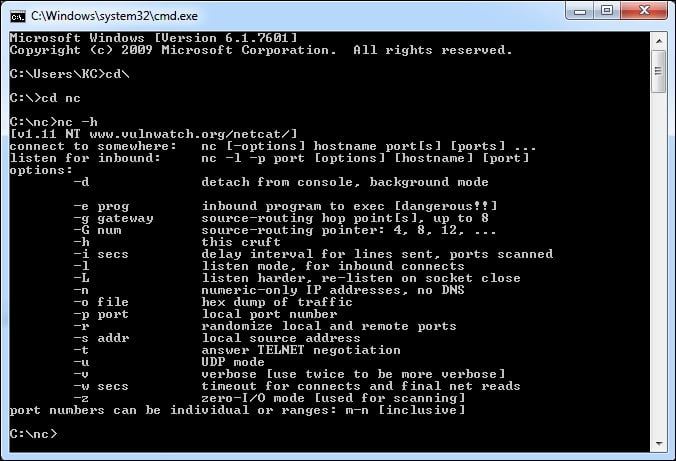
Sh command processes the received input and write it back to netcat. The fifo file is read by cat command and it content is sent to sh command. The input received from network is written to fifo file. Now here again we have redirected the output of netcat to fifo file. Then we have piped the content of this fifo file using pipe command to a shell 2>&1 is used to redirect stderr to same file where stdout is redirected which is piped to netcat server running at port 1567. This time we only need to redirect ouput of netcat at to file and input at B from file.Ĭlient $mcrypt –flush –bare -F -q -m ecb &1 | nc -l 1567 > /tmp/tmp_fifo Like in the below case we are sending file from B to A but server is created at A. It is not necessary do create the source of file as server we can work in the eopposeit order also. When B connects to A, A sends the file content and B save that content to file file.txt. Here we have created a server at A at redirected the netcat input from file file.txt, So when any connection is successfull the netcat send the content of the file.Īgain at the client we have redirect the output of netcat to file.txt. Suppose you want to transfer a file “file.txt” from A to BĪnyone can be server or client, lets make A as server and B as client.
#Netcat windows downlaod install
But is it really worth the effort to install and configure such complicated software and create a sever at your machine when you only need to transfer one file and only once. There are again numerous methods available like FTP, SCP, SMB etc. Most of the time we are trying to transfer file over network and stumble upon the problem which tool to use. The output is displayed at the shell and input is read from shell.Īfter this whatever you type on machine B will appear on A and vice-versa. The Linux netcat command starts a tcp server at port 1567 with stdout and stdin for input output stream i.e. Don’t worry my friend because netcat has a solution for you just create a chat server and a predetermined port and he can connects to you. If you want to chat with your friend there are numerous software and messenger services available at your disposal.But what if you do not have that luxury anymore like inside your computer lab, where all outside connections are restricted, how will you communicate to your friend who is sitting in the next room. The Linux netcat command will connect to open port 21 and will print the banner of the service running at that port. Once You have found the open ports you can easily grab the service banner by connecting to them using netcat. Banner are very usefull when you are trying to velberability in the system as it identify the type and version of the services. socketīanner is a text that services sends when you connects to them. This command will print all the open ports between 21 to 25. N option tell netcat not to use the DNS lookup for the address.

i.e the connection is closed as soon as it opens and no actual data exchange take place.

It can work in both TCP and UDP mode, default is TCP mode, to change to udp use -u option dom It helps them to identify the venerability in the system. Port scanning is done by system admin and hackers to find the open ports at some machine. You can build a server, transfer files, chat with friends, stream media or use it as a standalone client for some other protocols. After that everything is up to your imagination. What netcat does it opens the connection between two machines and give back two streams. You will be surprised to see what you can accomplish with Linux netcat command. Combined with other tools and redirection it can be used in number of ways in your scripts. Swiss Army Knife of networking netcat is a versatile tool that is able to read and write data across TCP and UDP network.


 0 kommentar(er)
0 kommentar(er)
